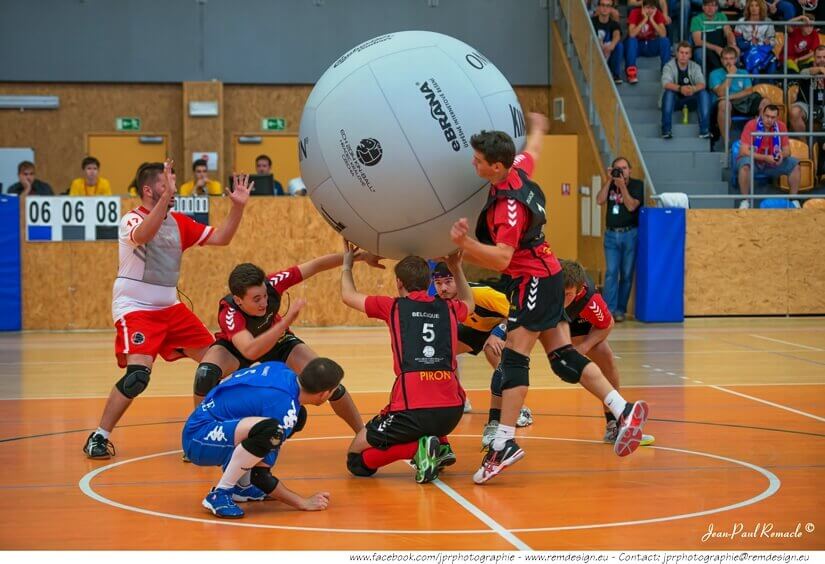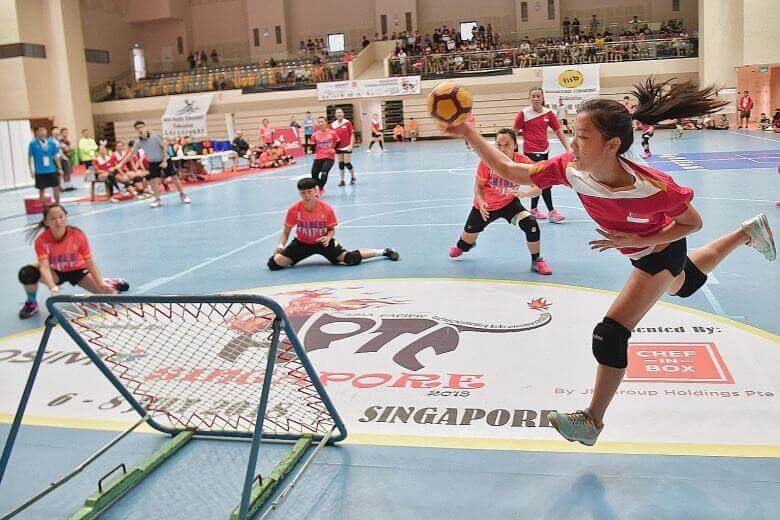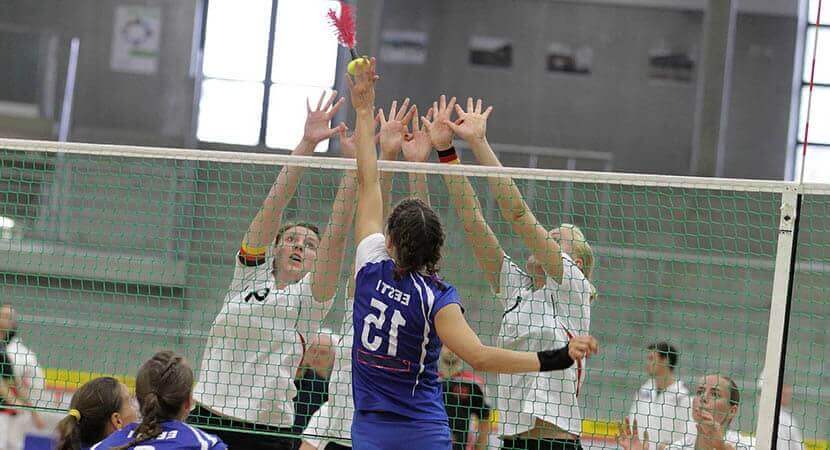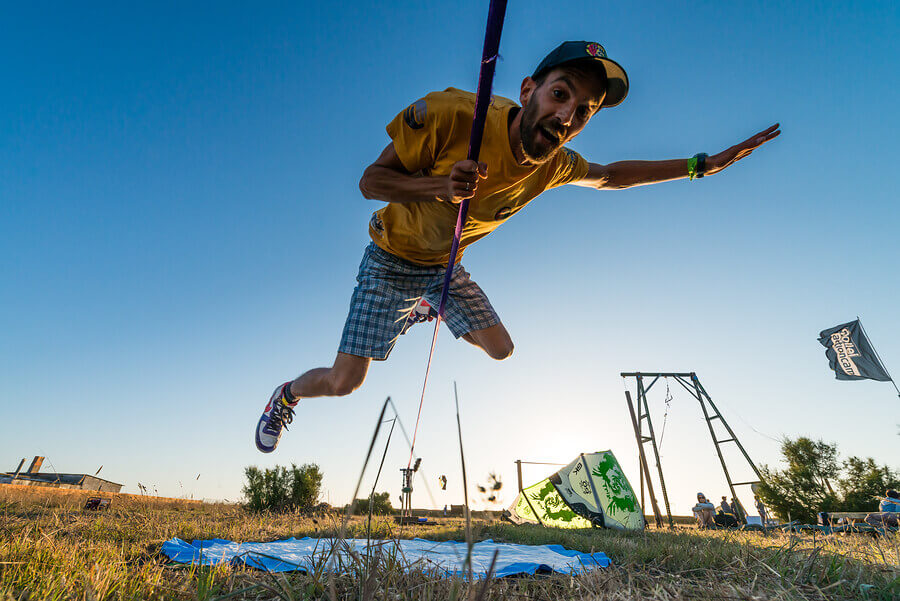Alternative Sports: Everything you Need to Know

Alternative sports are those that aren’t followed by masses of people in traditional circles. Instead, these sports are used for exercise or recreation.
In this article, we’ll cover everything you need to know about the top alternative sports that you probably haven’t heard of.
Characteristics and objectives of alternative sports
Alternative sports differ from traditional ones in many aspects. For starters, players don’t need regular facilities to practice them. Therefore, competitions and matches usually take place in a park, in schoolyards, on the beach, or really anywhere where players want to. They’re perfect for improvisation!
One of the main characteristics of these sports is that they’re easy to learn and the rules are very simple.
On the other hand, they can be practiced without distinction of age, sex or fitness level. These sports are usually played mostly for fun, and the traditional competitive aspect is ignored. In alternative sports, the important thing is to have fun and have a great time with friends.
Because of this, alternative sports can be quite difficult to classify. Nevertheless, we can distinguish among moderate and high-intensity alternative sports, or even those designed for children rather than adults.
The main objective when creating and playing alternative sports is to take advantage of the space, facilities, and elements available and use them to move our bodies.
In recent years, alternative sports in schools have become a different way of teaching students various topics in the subject curriculum. Using their muscles and brain, children develop the physical skills needed to play while avoiding the conflict and fanaticism that usually arises when playing run of the mill disciplines.
Some alternative sports on the rise
Maybe you’ve never heard of them, or maybe you’re an avid player. Either way, alternative sports are becoming more and more mainstream.
If you want to know more about these fun opportunities to share some playtime with your friends, check out our selection below.
We’re sure you and your friends will have a lot of fun trying out these sports on our list!
1. Kin-ball
This fun sport was created in the 80s in Canada. This is a team sport that even has an international federation. In fact, more than four million people worldwide love playing it.
To play this, you should organize three teams of at least four people in each. Then, teams work together to move the huge Kin-ball: this special ball measures 48 inches in diameter and weighs around two pounds. Because of this, playing it favors cooperation and is more than fun.
Kin-ball was created by Mario Demers, a Canadian professor of physical education in 1986. He devised the rules to help his students eliminate individualism and promote group work.

Picture: International Kin-Ball sport Federation.
2. Shuttleball
This alternative sport can be played individually or as a team, mixed or not. Shuttleball also goes by “speed badminton” or “crossminton” because it bears a strong resemblance to that game.
In 2001, Bill Brandes created shuttleball. He wanted to create an outside version of badminton. Traditional badminton can’t be played outside because the shuttlecock (similar to the ball) is too light and flies off in a breeze.
Instead, shuttleball boasts a heavier shuttlecock that resists strong winds. The new shuttlecock is called speeder.
In 2014, the International Speed Badminton Association changed its name to become the International Crossminton Organization. As of October 2019, it has 26 country member associations.
Players claim that crossminton has many physical and mental benefits, strengthening the upper body and creating lifelong relationships with other players.

Shuttleball equipment. Image: Der Ball.
3. Tchoukball
This is another indoor team sport that’s slowly becoming better known around the world.
It emerged in the 70s and is played in sports halls. Because the dynamics of the games reduce player-to-player contact, tchoukball is minimally dangerous.
Dr. Hermann Brandt created tchoukball as a way to reduce sports injuries without eliminating play. Because of this, the rules make it easy for people of all sizes, genders and fitness levels to take part.
Tchoukball uses a ball similar to that of handball. There are two sessions of 15 minutes each – with a five-minute break in the middle – and players can’t block the trajectory of the ball.
Then, the players try to bounce the ball against the rival trampoline and make it bounce back out of the semicircular shape surrounding it. If the pitcher fails or if the ball bounces off the court, the defending team scores a point.
Tchoukball has a very particular rule. Both teams can score on both trampolines, you should avoid physical contact and players can only take three steps while holding the ball.

Image: The Straits Times.
4. Indiaca: one of the oldest alternative sports
Indiaca is also called“peteca”. This is an alternative sport widely used for recreation and leisure. This game comes from Brazil, and you can play it in mixed double teams.
There are three types of indiaca: school or play, tennis, and competition.
It has similar rules to volleyball, but instead of using a ball it uses an indiaca. This looks like a badminton shuttlecock, only larger and heavier.
When playing, you use almost the entire body to make a maximum of three strokes per team to the ‘indiaca’. The goal is, as in volleyball, to make the indiaca touch the ground on the rival side.
Although Brazilians play it in teams of two, the team size varies around the world and in Germany there are teams of up to five players.

Image: cosasdelcibao.net
5. Korfball (or balonkorf)
This is one of the oldest alternative sports in existence. Its origins date back to 1902, and korfball was an official sport at the 1920 Antwerp Olympics.
The game consists of forming two teams that have to hit a ball in wicker or plastic container. Similar to basketball, the korfball (see our cover image) has four mixed players per team.
6. Slackline
This sport is becoming more and more popular in urban settings. It mainly works your balance and coordination.
Slacklining implies walking, jumping and balancing on a tight flat tape hooked between two anchors. These can be anything from trees, to posts, or anything you can find outside. You should tie the flat webbing at some distance from the ground but close enough so that falling off will cause no real harm.
Nevertheless, some slackliners like to “highline”. This means doing the same thing but at great heights. People have done this at the top of the Great Canyon, for example!

This alternative sport is different from tightrope walking. Even though it does look similar, tightrope walking uses different materials and the rope is tenser. With slackline, a little bouncing is desirable, so the weaving shouldn’t be too tight.
7. Tripela, a European alternative sports
Tripela was created in Portugal as a children’s alternative sport. Its creators wanted to develop children’s coordination, concentration, and teamwork. Because it was designed with school settings in mind, tripela is played in an indoor gym, or the same field as futsal or badminton.
Tripela pairs some technical aspects of soccer and handball, with offensive and defensive tactics found in other sports.
Are you interested in trying any of these alternative sports? If we haven’t piqued your curiosity, you could also try goalball – with a sound ball -, colpbol, donut, handball, Footgolf, goubak, datchball, ringol, and skate bottle. Let us know how it goes in the comments below!
Alternative sports are those that aren’t followed by masses of people in traditional circles. Instead, these sports are used for exercise or recreation.
In this article, we’ll cover everything you need to know about the top alternative sports that you probably haven’t heard of.
Characteristics and objectives of alternative sports
Alternative sports differ from traditional ones in many aspects. For starters, players don’t need regular facilities to practice them. Therefore, competitions and matches usually take place in a park, in schoolyards, on the beach, or really anywhere where players want to. They’re perfect for improvisation!
One of the main characteristics of these sports is that they’re easy to learn and the rules are very simple.
On the other hand, they can be practiced without distinction of age, sex or fitness level. These sports are usually played mostly for fun, and the traditional competitive aspect is ignored. In alternative sports, the important thing is to have fun and have a great time with friends.
Because of this, alternative sports can be quite difficult to classify. Nevertheless, we can distinguish among moderate and high-intensity alternative sports, or even those designed for children rather than adults.
The main objective when creating and playing alternative sports is to take advantage of the space, facilities, and elements available and use them to move our bodies.
In recent years, alternative sports in schools have become a different way of teaching students various topics in the subject curriculum. Using their muscles and brain, children develop the physical skills needed to play while avoiding the conflict and fanaticism that usually arises when playing run of the mill disciplines.
Some alternative sports on the rise
Maybe you’ve never heard of them, or maybe you’re an avid player. Either way, alternative sports are becoming more and more mainstream.
If you want to know more about these fun opportunities to share some playtime with your friends, check out our selection below.
We’re sure you and your friends will have a lot of fun trying out these sports on our list!
1. Kin-ball
This fun sport was created in the 80s in Canada. This is a team sport that even has an international federation. In fact, more than four million people worldwide love playing it.
To play this, you should organize three teams of at least four people in each. Then, teams work together to move the huge Kin-ball: this special ball measures 48 inches in diameter and weighs around two pounds. Because of this, playing it favors cooperation and is more than fun.
Kin-ball was created by Mario Demers, a Canadian professor of physical education in 1986. He devised the rules to help his students eliminate individualism and promote group work.

Picture: International Kin-Ball sport Federation.
2. Shuttleball
This alternative sport can be played individually or as a team, mixed or not. Shuttleball also goes by “speed badminton” or “crossminton” because it bears a strong resemblance to that game.
In 2001, Bill Brandes created shuttleball. He wanted to create an outside version of badminton. Traditional badminton can’t be played outside because the shuttlecock (similar to the ball) is too light and flies off in a breeze.
Instead, shuttleball boasts a heavier shuttlecock that resists strong winds. The new shuttlecock is called speeder.
In 2014, the International Speed Badminton Association changed its name to become the International Crossminton Organization. As of October 2019, it has 26 country member associations.
Players claim that crossminton has many physical and mental benefits, strengthening the upper body and creating lifelong relationships with other players.

Shuttleball equipment. Image: Der Ball.
3. Tchoukball
This is another indoor team sport that’s slowly becoming better known around the world.
It emerged in the 70s and is played in sports halls. Because the dynamics of the games reduce player-to-player contact, tchoukball is minimally dangerous.
Dr. Hermann Brandt created tchoukball as a way to reduce sports injuries without eliminating play. Because of this, the rules make it easy for people of all sizes, genders and fitness levels to take part.
Tchoukball uses a ball similar to that of handball. There are two sessions of 15 minutes each – with a five-minute break in the middle – and players can’t block the trajectory of the ball.
Then, the players try to bounce the ball against the rival trampoline and make it bounce back out of the semicircular shape surrounding it. If the pitcher fails or if the ball bounces off the court, the defending team scores a point.
Tchoukball has a very particular rule. Both teams can score on both trampolines, you should avoid physical contact and players can only take three steps while holding the ball.

Image: The Straits Times.
4. Indiaca: one of the oldest alternative sports
Indiaca is also called“peteca”. This is an alternative sport widely used for recreation and leisure. This game comes from Brazil, and you can play it in mixed double teams.
There are three types of indiaca: school or play, tennis, and competition.
It has similar rules to volleyball, but instead of using a ball it uses an indiaca. This looks like a badminton shuttlecock, only larger and heavier.
When playing, you use almost the entire body to make a maximum of three strokes per team to the ‘indiaca’. The goal is, as in volleyball, to make the indiaca touch the ground on the rival side.
Although Brazilians play it in teams of two, the team size varies around the world and in Germany there are teams of up to five players.

Image: cosasdelcibao.net
5. Korfball (or balonkorf)
This is one of the oldest alternative sports in existence. Its origins date back to 1902, and korfball was an official sport at the 1920 Antwerp Olympics.
The game consists of forming two teams that have to hit a ball in wicker or plastic container. Similar to basketball, the korfball (see our cover image) has four mixed players per team.
6. Slackline
This sport is becoming more and more popular in urban settings. It mainly works your balance and coordination.
Slacklining implies walking, jumping and balancing on a tight flat tape hooked between two anchors. These can be anything from trees, to posts, or anything you can find outside. You should tie the flat webbing at some distance from the ground but close enough so that falling off will cause no real harm.
Nevertheless, some slackliners like to “highline”. This means doing the same thing but at great heights. People have done this at the top of the Great Canyon, for example!

This alternative sport is different from tightrope walking. Even though it does look similar, tightrope walking uses different materials and the rope is tenser. With slackline, a little bouncing is desirable, so the weaving shouldn’t be too tight.
7. Tripela, a European alternative sports
Tripela was created in Portugal as a children’s alternative sport. Its creators wanted to develop children’s coordination, concentration, and teamwork. Because it was designed with school settings in mind, tripela is played in an indoor gym, or the same field as futsal or badminton.
Tripela pairs some technical aspects of soccer and handball, with offensive and defensive tactics found in other sports.
Are you interested in trying any of these alternative sports? If we haven’t piqued your curiosity, you could also try goalball – with a sound ball -, colpbol, donut, handball, Footgolf, goubak, datchball, ringol, and skate bottle. Let us know how it goes in the comments below!
All cited sources were thoroughly reviewed by our team to ensure their quality, reliability, currency, and validity. The bibliography of this article was considered reliable and of academic or scientific accuracy.
-
Kin-Ball. Wikipedia. https://es.wikipedia.org/wiki/Kin-Ball
- REGLAS BÁSICAS BALONKORF. IES Illa de San Simón. http://www.edu.xunta.gal/centros/iessansimon/system/files/u14/Reglamento_b__sico_balonkorf.pdf
- LA INDIACA. Historia. Junta de Andalucía. http://www.juntadeandalucia.es/averroes/centros-tic/14700420/helvia/aula/archivos/repositorio/0/94/Indiaca.pdf
- Herranz, V.M. TCHOUKBALL, UNA ALTERNATIVA PARTICIPATIVA:APLICACIÓN DEL MODELO
COMPRENSIVO DE INICIACIÓN DEPORTIVA A TRAVÉS DEL DEPORTE ALTERNATIVO. Universidad de Valladolid. https://uvadoc.uva.es/bitstream/handle/10324/24187/TFG-B.997.pdf;jsessionid=F132250F32F51731D7E400051F8E0A79?sequence=1 - SHUTTLEBALL. Sports and tendencies. https://sportsandtendencies.wordpress.com/shuttleball/
- Francisco José Martínez Hita. Nuevos deportes para una nueva Educación Física. https://efdeportes.com/index.php/EFDeportes/article/view/498/294
This text is provided for informational purposes only and does not replace consultation with a professional. If in doubt, consult your specialist.








